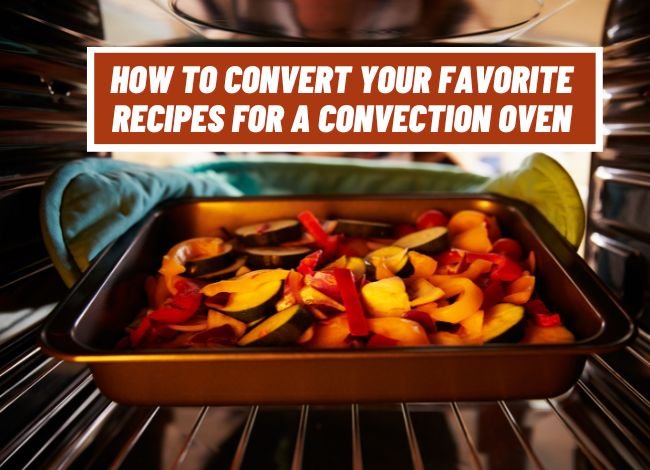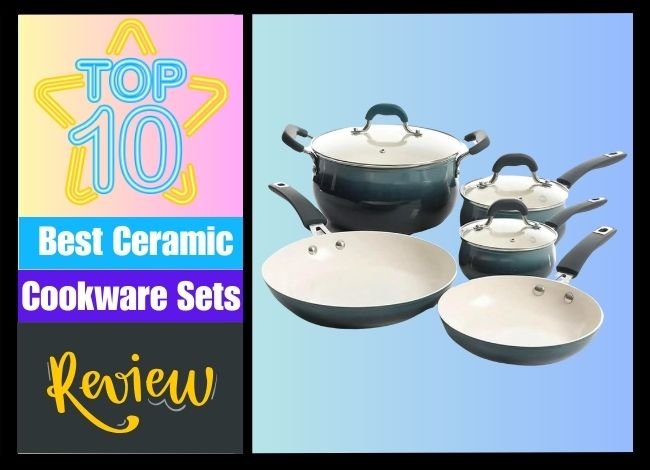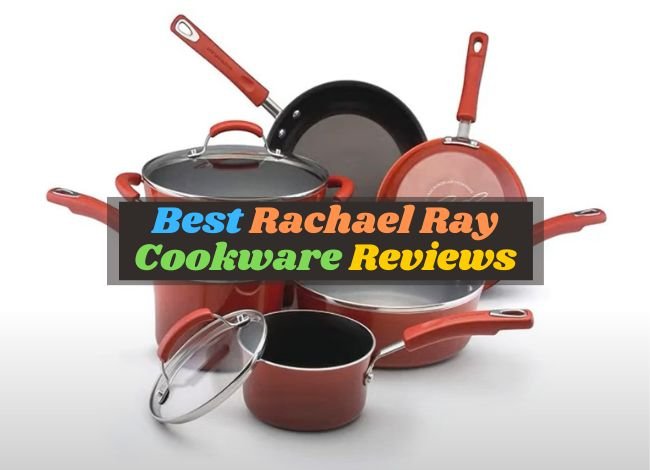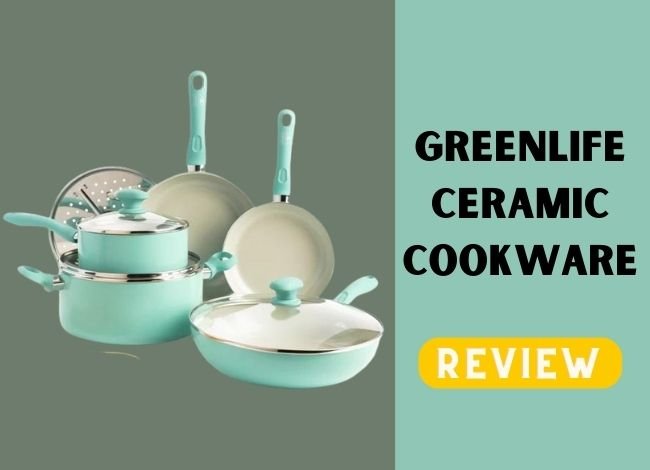Last Updated on February 8, 2024
Converting your favorite recipes for a convection oven can breathe new life into your go-to dishes, thanks to the even and efficient heat distribution that characterizes convection cooking. The key to successful conversion lies in understanding the differences between conventional and convection ovens. Firstly, reduce the cooking temperature by 25 degrees Fahrenheit compared to the temperature recommended for a traditional oven.
This adjustment accounts for the more efficient heat distribution of a convection oven, which cooks food more evenly and quickly. Consider reducing the cooking time by roughly 20% to 25%. Start checking your dish for doneness earlier than the recipe suggests to avoid overcooking.
It’s also wise to use oven-proof, low-sided dishes to maximize the exposure of your food to the circulating air, enhancing the effectiveness of the convection cooking process. Implementing these simple adjustments will ensure your cherished recipes come out perfectly when using a convection oven, retaining moisture and flavor while achieving a beautifully browned exterior.
What Is Convection Cooking?
Convection cooking represents a significant leap in kitchen technology, offering a way to cook food more evenly, quickly, and efficiently than traditional ovens. At the heart of convection cooking is the use of a fan and exhaust system that circulates hot air around the food. This constant movement of air eliminates hot spots within the oven, ensuring that food cooks evenly on all sides. The result is not only faster cooking times but also textures and flavors that are enhanced compared to conventional roasting or baking. Convection ovens are particularly adept at roasting meats to perfection, with crispy exteriors and moist interiors, baking pastries to a golden-brown finish, and dehydrating fruits and vegetables efficiently.
Moreover, convection cooking can improve the quality of your baked goods, promoting flakier crusts and lighter textures. Understanding the principles of convection cooking can empower home cooks to experiment with their recipes and achieve professional-level results. Embracing convection cooking means embracing the opportunity to elevate the quality of your homemade dishes, making it a worthwhile endeavor for any culinary enthusiast.
How to Adjust a Recipe for Convection Cooking
When adapting a recipe for a convection oven, the key is understanding how convection affects cooking. The primary difference lies in the even distribution of heat, which often leads to faster cooking times and a more uniform temperature throughout the dish. Begin by reviewing the recipe’s recommended oven temperature and cooking time, bearing in mind that convection cooking can reduce the required time by about 25%. Additionally, consider the type of dish you’re preparing.
Items like cookies and roasted meats benefit greatly from convection, as the circulating air promotes browning and crisping. However, due to air movement, delicate items such as soufflés might not fare as well. Experimentation and slight modifications will help you find the perfect balance for each recipe.
Adjust the Time
Adjusting the cooking time is crucial when using a convection oven. A general rule of thumb is to reduce the cooking time by 25%, although this can vary based on the specific recipe. For example, if a recipe calls for baking a cake at 350°F for 30 minutes in a conventional oven, you might consider reducing the time to about 22-25 minutes in a convection oven. It’s essential to start checking for doneness well before the adjusted time expires since factors like oven calibration, the size and shape of the baking dish, and even altitude can affect cooking times. Using an oven thermometer to verify temperature accuracy and a timer to remind you to check progress can prevent overcooking and ensure that your dishes come out ideally every time.
Adjust the Temperature
Along with adjusting the cooking time, lowering the temperature by 25°F (about 14°C) is a common guideline when converting recipes for convection cooking. This adjustment accounts for the efficiency of convection ovens in circulating hot air, which can cause foods to cook faster and potentially burn if the temperature is too high. For instance, if your standard recipe requires an oven temperature of 400°F, try setting your convection oven to 375°F.
Remember, these adjustments are starting points; depending on the dish, you may need to tweak the temperature slightly up or down. Keeping a close eye on your dish as it cooks will help you make the necessary adjustments to perfect your recipe for convection cooking.
Check Your Settings
Before starting, ensure you’re familiar with your convection oven’s settings. Some ovens choose between conventional and convection cooking, while others might have specific modes for baking, roasting, or even dehydrating. Use the convection bake setting for most recipes, as this utilizes the fan while keeping the bottom heating element active, ideal for baked goods and casseroles. For meats and vegetables, the convection roast setting can enhance browning and crispiness.
Also, don’t forget to use oven racks and baking dishes that allow for the maximum flow of air around your food. This ensures even cooking and the best possible results. Regularly consulting the oven’s manual can provide additional insights and tips tailored to your specific model.
Test for Doneness
When adapting recipes for a convection oven, testing for doneness earlier than the recipe indicates is crucial. Since convection ovens cook food up to 25% faster than conventional ovens, start checking your dish about three-quarters through the recommended cooking time. Use a meat thermometer to ensure meats reach a safe internal temperature.
For baked goods, insert a toothpick or cake tester into the center. If it comes out clean, your cake or muffins are done. Remember, the visual aspect of the food can be deceiving in convection cooking; it might look golden brown before it’s fully cooked inside. This early testing helps prevent overcooking, ensuring your meals are perfectly moist and tender.
Use the Right Cookware
To maximize the efficiency of your convection oven, selecting the right cookware is essential. Opt for low-sided, metal pans or rimless baking sheets to enhance the air circulation around your food, leading to a more evenly cooked dish. Glass or ceramic dishes can also be used, but they might slow down cooking slightly due to their insulating properties.
Avoid using cookware with high sides or covering your food with aluminum foil, as these practices can obstruct the flow of hot air and diminish the benefits of convection cooking. Additionally, placing the racks in the right position is vital; use the middle rack for even cooking. Adapting your cookware not only improves cooking results but also ensures you’re making the most of your convection oven’s capabilities.
The Best Foods to Cook With Convection Heat
Convection ovens excel at roasting, baking, and crisping. Foods that benefit from a crispy exterior or uniform texture are ideal candidates for convection cooking. Roasted meats and vegetables come out exceptionally well, as the circulating air caramelizes exteriors while keeping interiors juicy and tender. Baked goods like pies, pastries, and bread also see improvements, with convection heat creating a more uniform rise and golden crust. Additionally, convection is excellent for dehydrating fruits or making homemade chips, thanks to its ability to circulate warm air evenly.
However, delicate foods such as custards and flans might not fare as well due to the moving air. By focusing on convection-friendly foods, you can harness the full potential of your oven, making every meal a delightful experience.
Foods to Cook With Conventional Heat
Not all foods benefit from the convection setting, and understanding which to cook with conventional heat can make all the difference in the outcome of your dish. Foods that require moisture retention, such as custards and flans, are best cooked in a traditional oven. The gentle heat allows these delicate dishes to set without losing too much moisture, which is crucial for achieving the right texture. Similarly, cakes, soufflés, and bread often fare better with conventional heat, as the less intense airflow allows them to rise properly without creating a crust too quickly or drying out.
It’s essential to recognize the role of moisture and heat distribution in the cooking process. Conventional ovens provide a more controlled environment for dishes that are sensitive to rapid changes in temperature or that rely on steam. By choosing to cook these items in a conventional oven, you ensure they cook evenly and retain their intended texture and flavor, making each meal a success.
Frequently Asked Questions
- Q: Can I use aluminum foil in a convection oven?
- Yes, you can use aluminum foil in a convection oven, but with caution. Place it carefully so it doesn’t obstruct the airflow, which is crucial for even cooking in convection mode.
- Q: How do I convert baking times for a convection oven?
- Generally, reduce the cooking temperature by 25°F and start checking for doneness 75% through the original baking time. Adjustments may vary based on the recipe and oven.
- Q: Is preheating necessary for convection ovens?
- Yes, preheating is still essential in convection cooking to ensure your food starts cooking at the right temperature for the recipe’s intended outcome.
- Q: Can I bake multiple trays of cookies in a convection oven?
- Absolutely! One of the benefits of a convection oven is its ability to cook food evenly across multiple racks, making it perfect for baking several trays of cookies at once.
- Q: Why is my cake not rising properly in a convection oven? Cakes may not rise properly if the oven is set too hot or the fan is too strong, causing the surface to set before the cake can rise. Adjust the temperature or use conventional heat for baking cakes.
- Q: How does a convection oven affect roasting meats?
- Convection ovens are excellent for roasting meats, as they circulate hot air around the meat, cooking it faster and more evenly while helping to achieve a crispy exterior.
- Q: Can I use glass bakeware in a convection oven?
- Yes, glass bakeware can be used in a convection oven. However, you may need to adjust the cooking time or temperature since glass can affect heat distribution.
- Q: Do I need special pans for a convection oven?
- No special pans are required, but pans with low sides are recommended to enhance airflow around the food for more even cooking.
- Q: How should I position food in a convection oven?
- Position food in the center of the oven to allow for optimal air circulation. Avoid overcrowding to ensure even cooking.
- Q: Is there a difference in energy usage between convection and conventional ovens?
- Convection ovens are generally more energy-efficient as they cook food faster and at a lower temperature than conventional ovens.
- Q: Can I dehydrate food in a convection oven?
- Yes, the consistent airflow in a convection oven makes it ideal for dehydrating fruits, vegetables, and meats evenly.
- Q: How do I clean my convection oven?
- Follow the manufacturer’s instructions for cleaning. Generally, you can use a gentle cleaner and avoid spraying directly on the fan or heating elements.




